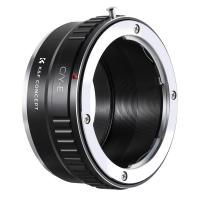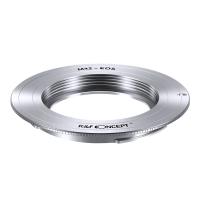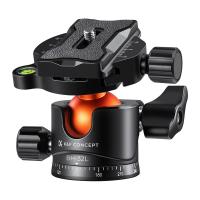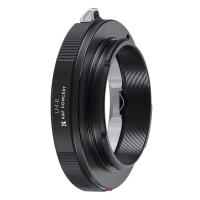Are Bed Bug Eggs Microscopic ?
Bed bug eggs are not microscopic, but they are very small and difficult to see with the naked eye. They are about the size of a pinhead and are usually white or translucent in color. Bed bug eggs are oval-shaped and have a sticky surface that allows them to adhere to surfaces such as fabric, wood, and paper. They are typically laid in clusters of 10-50 eggs and can be found in cracks and crevices near where bed bugs hide, such as in mattresses, box springs, and furniture. While bed bug eggs are small, they are still visible with the aid of a magnifying glass or microscope.
1、 Bed bug egg size and appearance
Bed bug eggs are not microscopic, but they are very small and difficult to see with the naked eye. The size and appearance of bed bug eggs can vary depending on the species of bed bug, but they are generally about the size of a pinhead and are white or translucent in color.
Bed bug eggs are oval-shaped and have a sticky coating that allows them to adhere to surfaces. They are typically laid in clusters of 10-50 eggs and can be found in cracks and crevices near where bed bugs are hiding.
While bed bug eggs are not microscopic, they can be difficult to detect because of their small size and ability to blend in with their surroundings. It is important to inspect for bed bug eggs regularly if you suspect an infestation, as they can hatch in as little as 6-10 days and quickly lead to a larger infestation.
Recent research has shown that bed bug eggs may be more resistant to insecticides than previously thought, making it even more important to detect and eliminate them early on in an infestation. Additionally, some bed bug populations have developed resistance to certain insecticides, further highlighting the importance of early detection and integrated pest management strategies.
2、 Microscopic characteristics of bed bug eggs
Microscopic characteristics of bed bug eggs are an important aspect of their identification and control. Bed bug eggs are oval-shaped and about 1mm in length. They are white in color and have a sticky texture that allows them to adhere to surfaces. Bed bug eggs are laid in clusters of 10-50 and are often found in cracks and crevices near the bed or other areas where people sleep or rest.
Recent research has shown that bed bug eggs are not completely microscopic, but they are still very small and difficult to see with the naked eye. The eggs are covered in a sticky substance that helps them adhere to surfaces, making them even harder to detect. However, with the use of a magnifying glass or microscope, bed bug eggs can be easily identified.
It is important to note that bed bug eggs are resistant to many insecticides and can survive for several months without feeding. This makes them a particularly challenging pest to control. The best way to prevent a bed bug infestation is to regularly inspect and clean areas where bed bugs are likely to hide, such as mattresses, box springs, and furniture.
In conclusion, while bed bug eggs are not completely microscopic, they are still very small and difficult to detect without the use of magnification. Understanding the microscopic characteristics of bed bug eggs is important for effective identification and control of these pests.
3、 Bed bug egg development and hatching
Bed bug eggs are not microscopic, but they are very small and difficult to see with the naked eye. They are about the size of a pinhead and are white in color. Bed bug eggs are oval-shaped and have a sticky surface that allows them to adhere to surfaces such as fabric, wood, and paper.
Bed bug egg development and hatching is a complex process that can take anywhere from six to ten days. The female bed bug lays her eggs in cracks and crevices near the host's sleeping area. The eggs are then incubated by the female bed bug for several days before they hatch.
Once the eggs hatch, the nymphs emerge and begin to feed on the host's blood. The nymphs go through several molts before they reach adulthood, and each molt requires a blood meal. The entire life cycle of a bed bug can take anywhere from several weeks to several months, depending on the temperature and availability of food.
Recent research has shown that bed bugs are becoming increasingly resistant to insecticides, making them more difficult to control. This has led to the development of new methods for controlling bed bugs, such as heat treatments and the use of natural predators.
In conclusion, bed bug eggs are not microscopic, but they are very small and difficult to see. Bed bug egg development and hatching is a complex process that can take several days, and the entire life cycle of a bed bug can take several weeks to several months. With the increasing resistance of bed bugs to insecticides, new methods for controlling them are being developed.
4、 Bed bug egg-laying behavior and frequency
Bed bug eggs are not microscopic, but they are very small and difficult to see with the naked eye. They are about the size of a pinhead and are white in color. Bed bugs typically lay their eggs in cracks and crevices near their feeding source, such as in the seams of mattresses or in the folds of curtains. The eggs are coated in a sticky substance that helps them adhere to surfaces, making them even harder to detect.
Bed bug egg-laying behavior and frequency can vary depending on a number of factors, including the availability of food, temperature, and humidity. Female bed bugs can lay up to five eggs per day and up to 500 eggs in their lifetime. However, if conditions are not optimal, such as if there is a lack of food or if the temperature is too low, egg-laying may be reduced or even halted.
Recent research has shown that bed bugs may be able to adjust their egg-laying behavior in response to environmental cues. For example, if they detect the presence of a potential host, such as a human, they may lay more eggs in anticipation of a steady food source. Additionally, bed bugs may lay more eggs in warmer temperatures, which can speed up their development and increase their chances of survival.
Overall, while bed bug eggs are not microscopic, they are still very small and can be difficult to detect. Understanding bed bug egg-laying behavior and frequency can help with effective pest control and prevention strategies.























There are no comments for this blog.